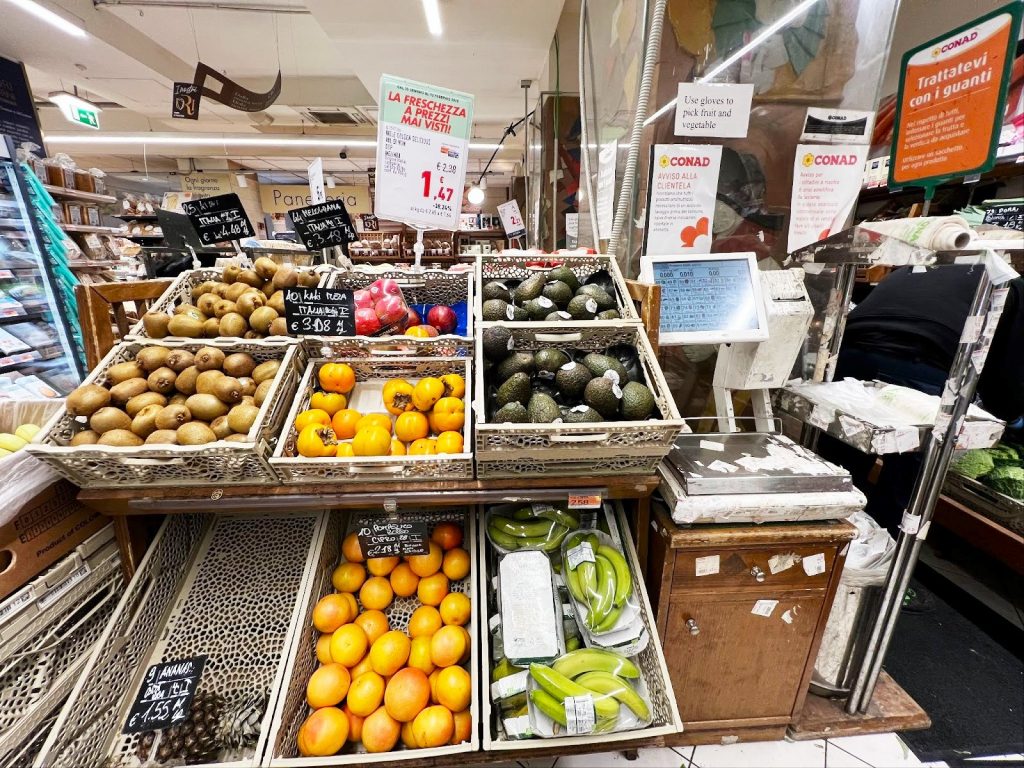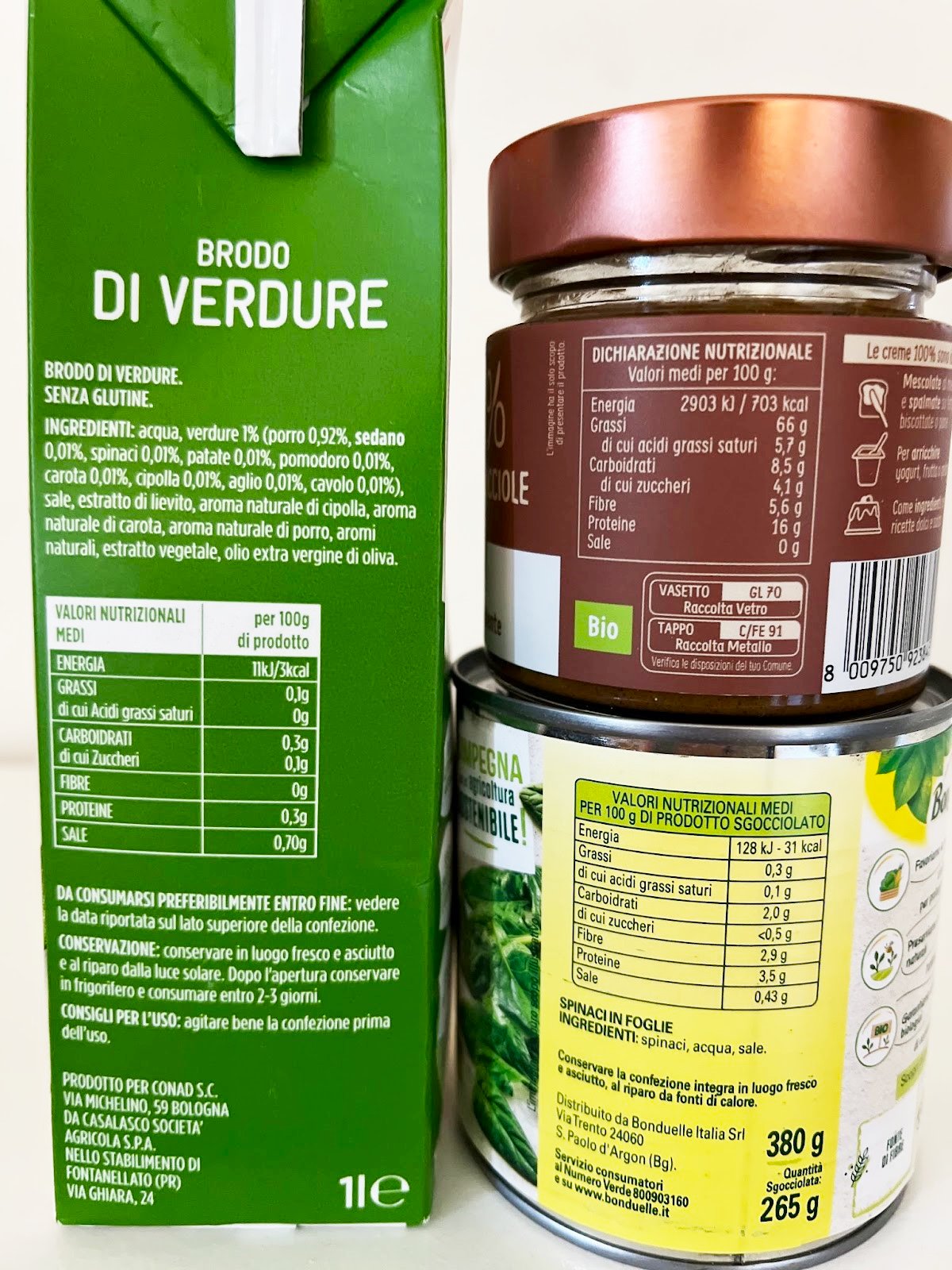Written by Anna Stamatos, University of Maryland | ISI Florence Spring 2025
Visiting a country and living there are two very different experiences, and I have found that the transition to long-term residence brings some interesting differences. Being three weeks into my study abroad semester, I am beginning to adapt to everyday routines, including grocery shopping. This seemingly mundane activity presented some initial challenges, but it has been fun to discover more about Italian culture through this task.
Here’s a rundown of what I’ve observed so far!
Weighing Your Produce is a Must

One of the biggest differences in Italian grocery stores is the requirement to weigh and label your fruit and veg using the scales located around the produce section, before checking out.
This is unlike the typical process back in the US, where you pick out your fruits and vegetables and carry on. If you miss this step in Italy, the cashier will make you get out of line and return to the scales – a lesson I quickly learned the hard way. The process of weighing and labeling produce will likely develop into a habit with time, but when adjusting to a new shopping environment it can easily slip your mind.
Bring Your Own Bag (and be Ready to Pack it)
Like many grocery stores in the US, Italian stores charge 5-10 Euro cents for plastic bags. I have found it useful to always have a reusable bag on hand, just in case I need to stop by the grocery store. Another important difference is that cashiers here in Italy will not pack your bag as many do in the US. This is also something I’ve had to learn but I have easily adjusted to.
Understanding Nutrition Labels
Nutrition labeling is another area where I have encountered noticeable differences. In the US, product labels typically include information based on one serving size in addition to the whole package. In Italy and across the European Union, the standard is to display these values per 100 grams or 100 milliliters, often omitting the serving size. As someone who enjoys trying new foods and monitoring my health, I have found it difficult to understand the nutritional content of the new foods that I am buying, in addition to understanding the suggested portion sizes. It takes a little more math to figure out total intake, but this method provides a standardized way to compare the nutritional content of different foods. After getting used to this, I have found it beneficial when deciding between products. Another difference is that EU labels typically don’t list Vitamin D or Potassium, which are instead common in the US.
A label will typically include the following terms, which I have translated from Italian to make the process of understanding easier:

Biologico = Organic
Grassi = Fat
Di cui acidi grassi saturi = Of which are saturated fats
Carboidrati = Carbohydrates
Di cui zuccheri = Of which are sugars
Fibre = Fiber
Proteine = Protein
Sale = Salt
Frequent Shopping Trips
I have noticed that, in contrast to the large weekly grocery shopping common in the US, Italians tend to shop for smaller quantities of fresh ingredients more frequently. I have found myself in the grocery store almost every other day, often purchasing what is needed for that day’s meals. I enjoy this approach, which emphasizes freshness and quality over bulk buying. It also allows me to try new products without having to buy a large quantity before knowing if I will like them. Although more time-consuming, these frequent trips to the store provide a nice change of pace.
After overcoming some initial challenges, these differences have provided insight into Italy’s broader cultural approach to food and sustainability and have added to the charm that I have come to enjoy in Florence. As I continue my time in Italy, I expect these small yet important adjustments to become second nature, helping me better understand Italian daily life and strengthen my connection to this city.
